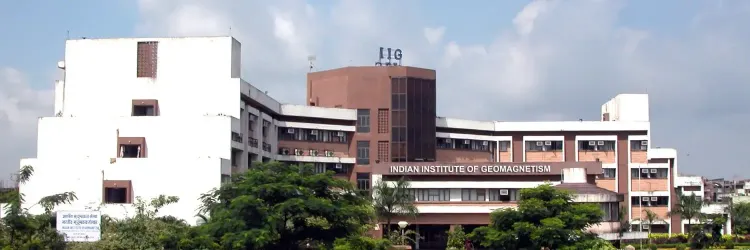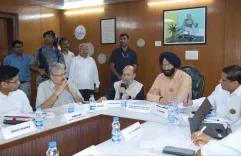Indian Institute of Geomagnetism Launches Digitization Initiative for Historic Observatory Data

Synopsis
Key Takeaways
- Digitization of historical data from Colaba geomagnetic observatory.
- Continuity of observations maintained through Alibag observatory.
- Research on space weather impacts will be conducted.
- First continuous magnetic observations began in 1841.
- World Data Center for Geomagnetism is hosted by IIG.
New Delhi, Jan 20 (NationPress) The Department of Science and Technology (DST) has officially opened a new research center at the Indian Institute of Geomagnetism (IIG) aimed at digitizing archived data from the over 180-year-old Colaba geomagnetic observatory in India, according to a statement from the Ministry of Science & Technology on Monday.
The Colaba Research Centre will concentrate on converting historical data sets from one of India’s oldest observatories into a digital format. The Colaba observatory, which functioned from 1841 to 1906, is located in a historically significant area in Colaba, Mumbai, where the first consistent observations of geomagnetic field variations in India were initiated.
The continuity of magnetic observations is upheld by the establishment of the Alibag magnetic observatory. The combined records of Colaba and Alibag contribute to over 175 years of magnetic data. This historical site features vintage equipment that has documented geomagnetic data, capturing geomagnetic storms throughout the years, and reflects a segment of India’s scientific exploration history.
The digitization process “will incorporate modern techniques to offer valuable insights into historical geomagnetic storms at a site housing a heritage building, supported by a dedicated team of nine staff members,” stated the Ministry.
This initiative will help establish a benchmark for predicting the likelihood of geomagnetic storms in the future. The center will also conduct research on the effects of space weather and related fields.
The Colaba geomagnetic observatory was the first to conduct consistent magnetic observations in 1841, providing uninterrupted magnetic data for over 180 years. The observatory safeguards its magnetic data through magnetograms, microfilms, and various volumes, and it is the sole observatory in India that recorded the Super-intense Carrington event of September 1-2, 1859, during which the magnetic field decreased by 1600 nT.
The center also supplies real-time geomagnetic field variations to international geomagnetic databases.
Director of IIG, Professor A P Dimri, elaborated on the institute's diverse activities, including IIG’s research on the Earth’s geomagnetic protective shield, investigations into wave-particle interactions in the Earth’s magnetosphere, sediment core collections from lakes, and integrated geophysical studies in the North East Himalayan Region.
Founded in 1971 as an autonomous body of the DST, IIG succeeded the Colaba Observatory and is committed to both basic and applied research in geomagnetism, geophysics, atmospheric physics, space physics, and plasma physics, engaging in interdisciplinary research that covers all facets of the Sun-Solar Wind-Magnetosphere-Ionosphere-Atmosphere system.
It manages 13 magnetic observatories throughout India and hosts a World Data Center for Geomagnetism, which maintains extensive geomagnetic data.









